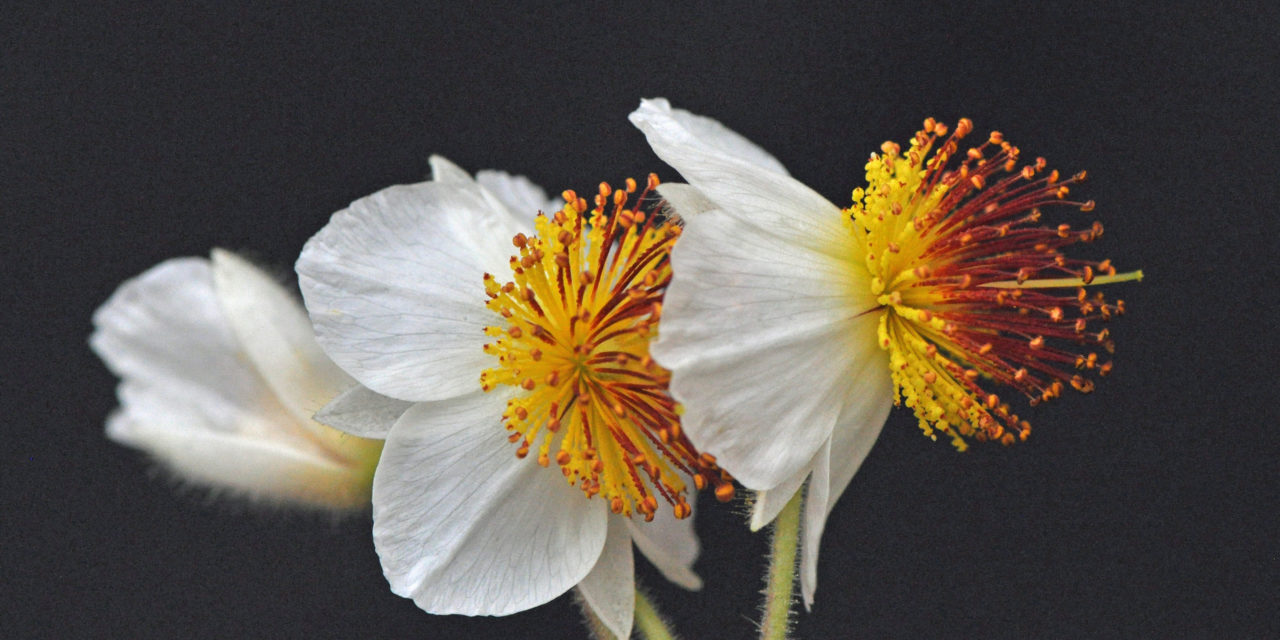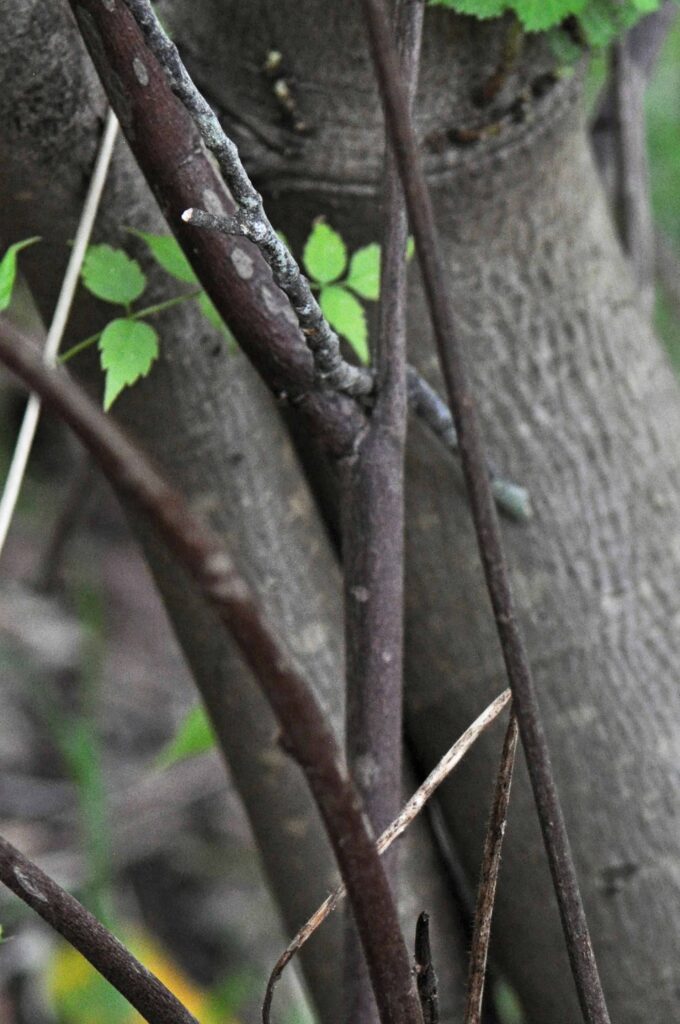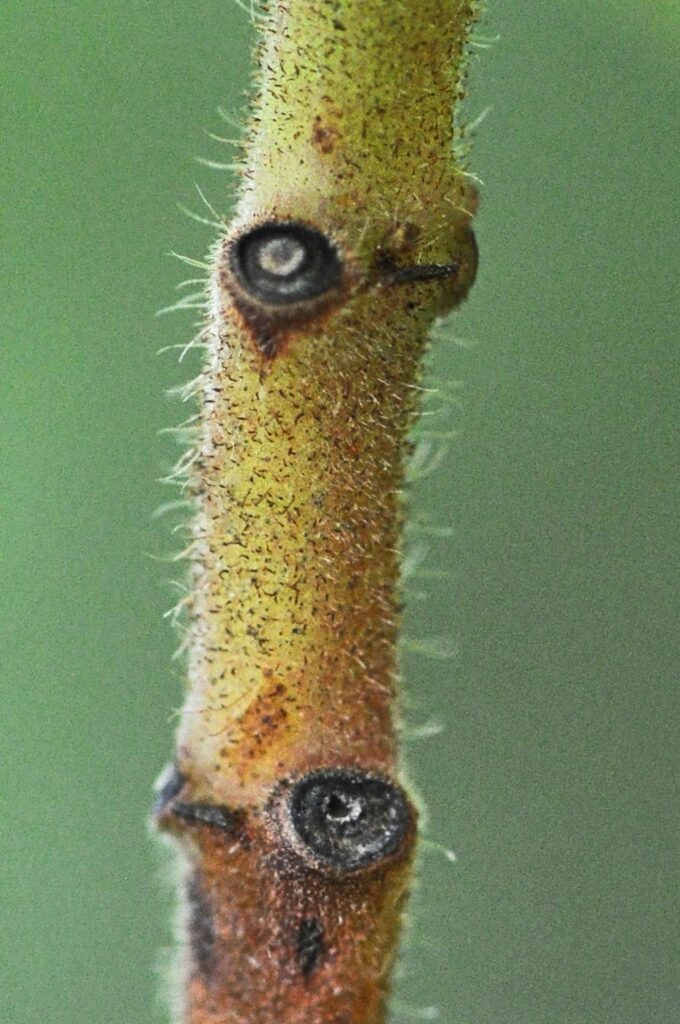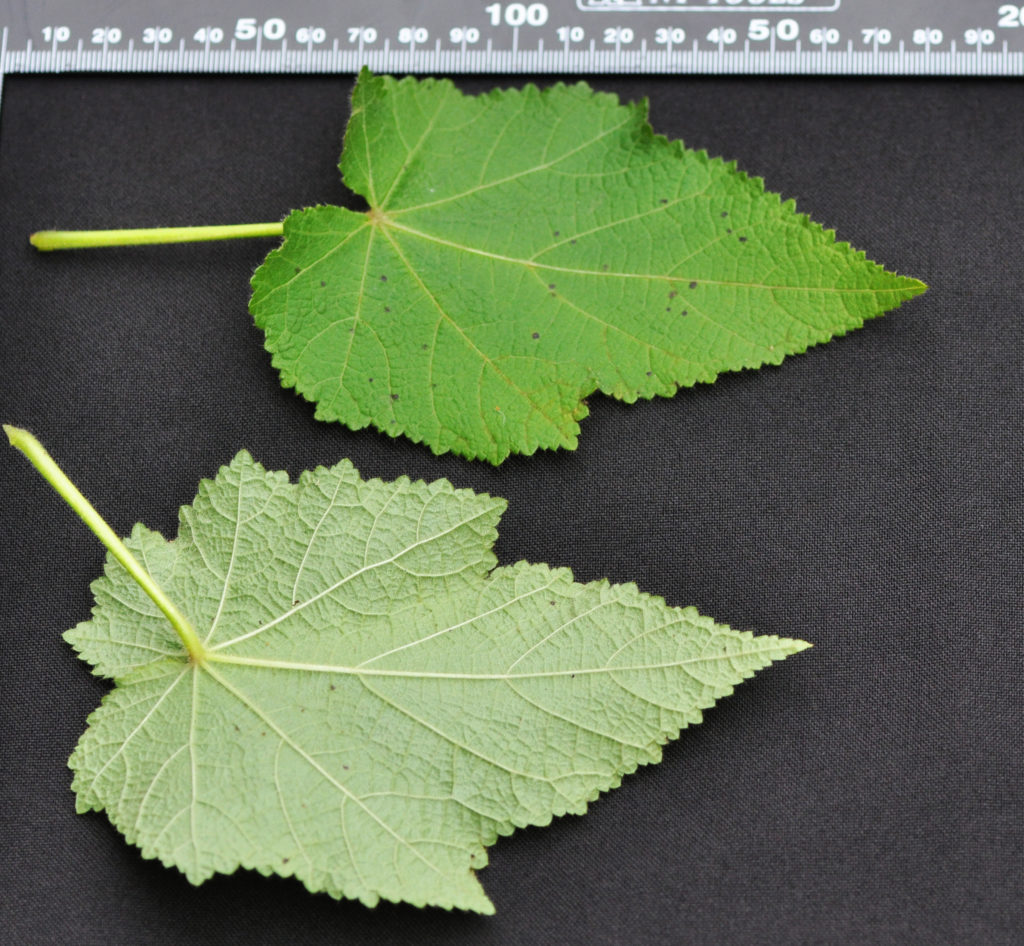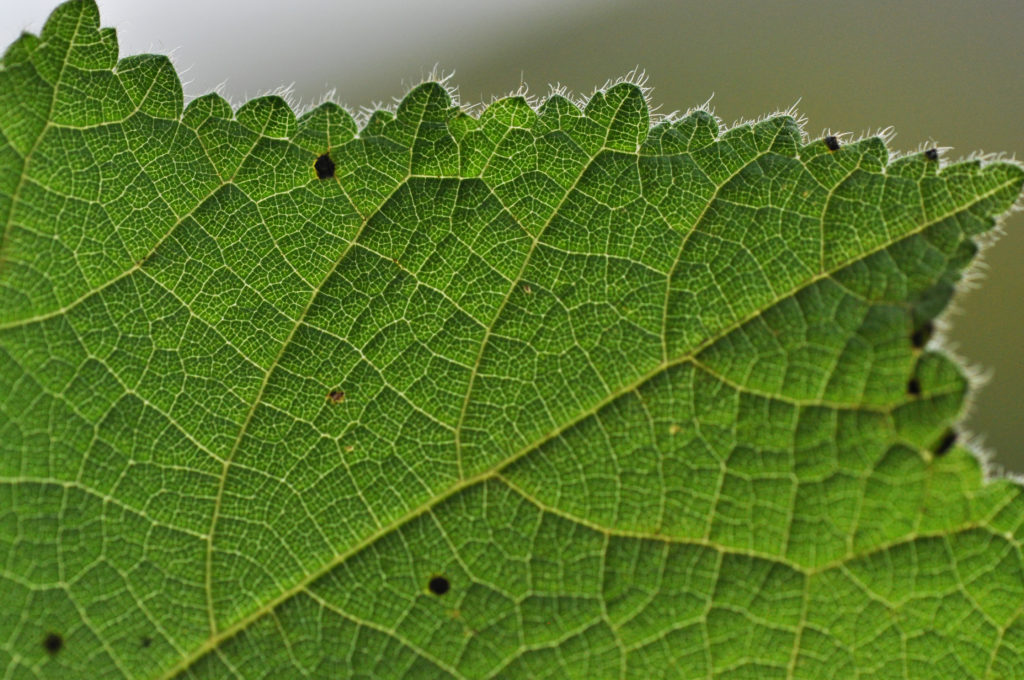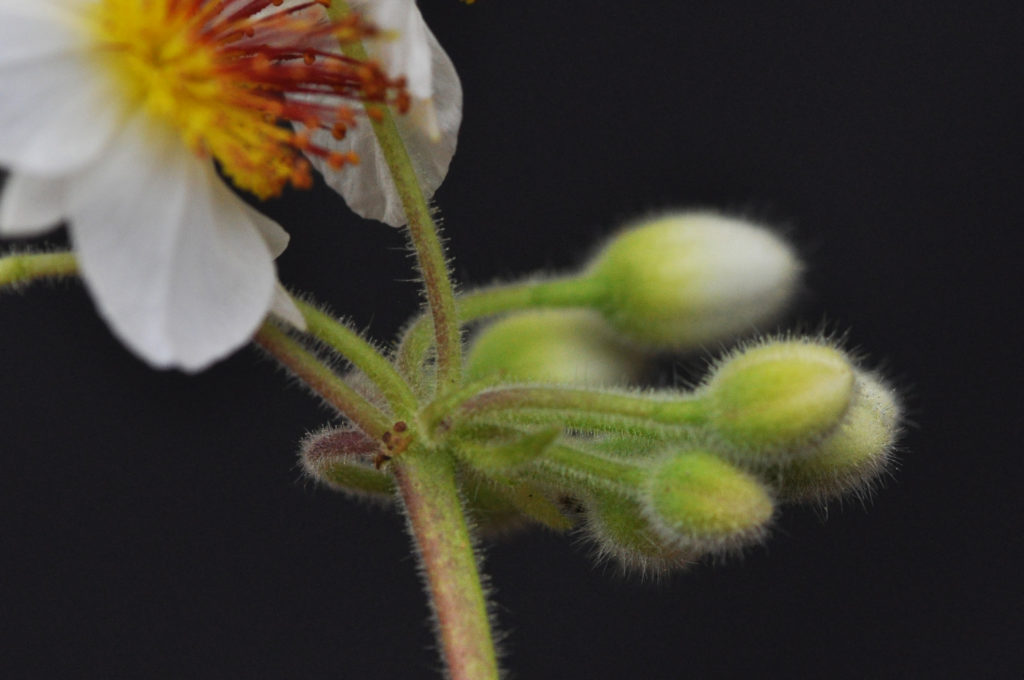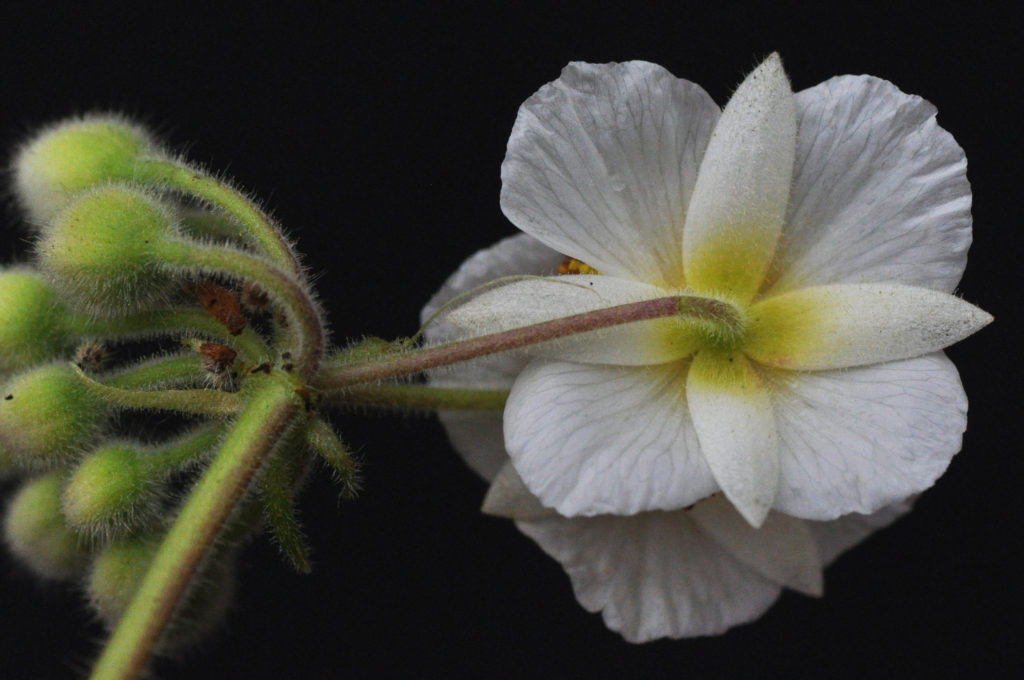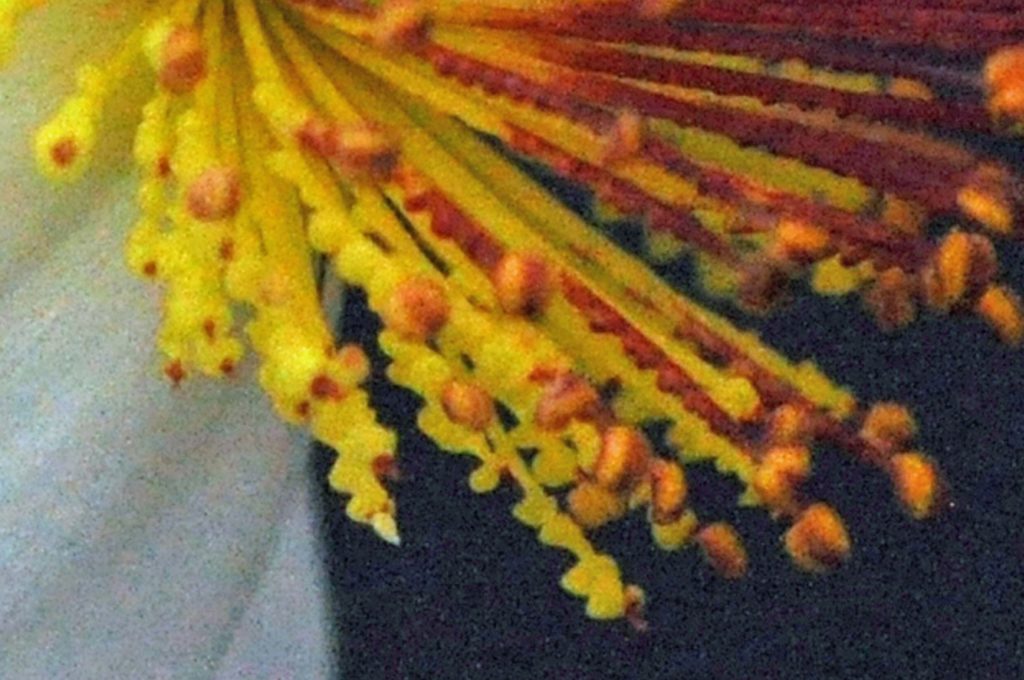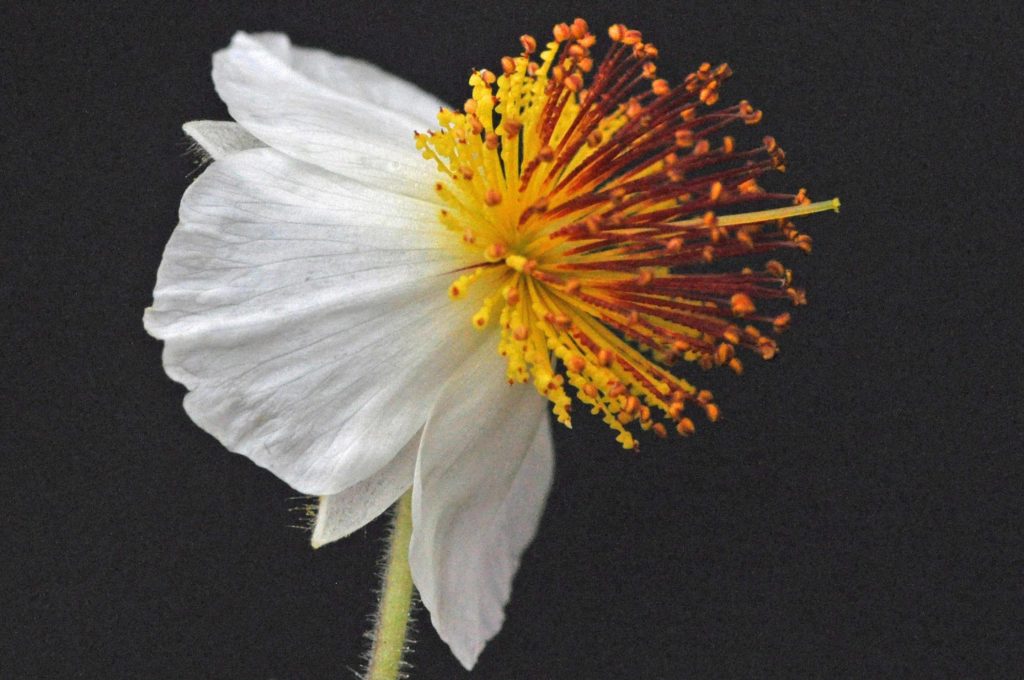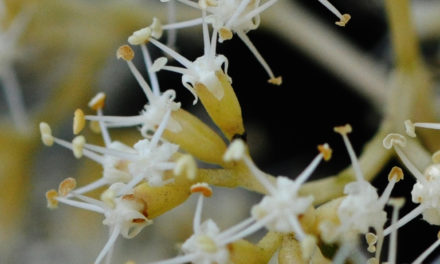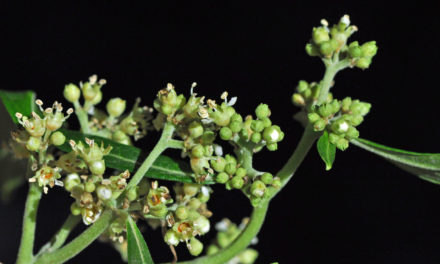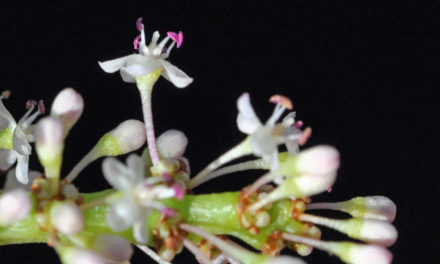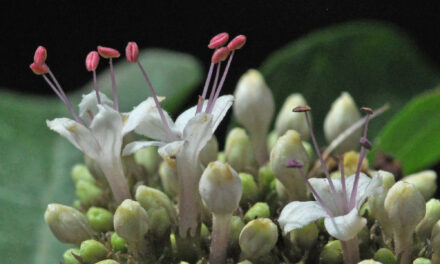General Info – summary
This SA endemic is a shrub or a Tree up to 7m high. The evergreen, alternate, thin and simple Leaves are soft, hairy & distinctly toothed. Basal veins are palmate. Impressive, regular, 4-merous and bisexual Flowers develop in umbels. Haptonastic stamens have nodose filaments. The superior ovary has an extending style. Fruit is a spherical capsule covered with rigid bristles and contains tiny brown seeds.
Description
Previous Names: Nil.
Sparrmannia africana
SA Tree No. 457.
Common names: (Afr) Kaapse Stokroos, Stokroos. (Eng) African hemp, Cape Hollyhock, Cape Stock-rose, Stock Rose.
Family: Malvaceae. (Wild Pear, Gossypium – cotton, baobab and Hibiscus). This family has about 240 genera and 4 200+ species. Indigenous genera that have trees on this website includes Adansonia (baobab), Cola, Dombeya, Grewia, Hibiscus, Sparrmannia and Sterculia. The usually alternate Leaves of all members possess stipules and apart from Adansonia, remain simple. Flowers are regular, bisexual or unisexual and have 5 petals (Sparrmannia africana has 4). Petals are absent in Cola and Sterculia. There are 5 to many stamens with filaments often united into a staminal tube. This surrounds the superior Ovary with its simple Style and capitate or lobed Stigma. Fruits are usually nuts, schizocarps or loculicidal capsules.
Name derivation: Sparrmannia – named after the Swedish doctor Anders Sparrman (1748-1820). He was a naturalist and abolitionist. He was a pupil of Linnaeus and travelled to the Cape in 1772. Here he travelled as far as the Great Fish River and returned to Sweden in 1776. Anders Sparrman was the first to collect Sparrmannia africana. africana – from Africa. The genus Sparrmannia is confined to Africa and Madagascar. Star shaped hairs are a feature of this genus.
Conservation: National Status: L C (Least Concern). Assessed: 2015 (L. von Staden). This plant is not in danger of extinction.
Tree
This evergreen plant may be a large shrub or a small Tree up to 7m high and 4m wide. It can also be a rampant weed. The smooth Bark is greenish grey to light brown (photo 920). Spongy young Branches are soft and hairy (photo 922). Here the leaf scars are clearly visible.
- 920 2018.09.15 Kirstenbosch NBG. Photo: David Becking.
- 922 2018.09.15 Kirstenbosch NBG. Photo: David Becking.
Leaves
The large, softly textured and alternatively arranged Leaves are evergreen, hairy on both sides and often cordate (heart shaped – photo 917). Individual large leaves may reach to 18 x 10cm or larger and are simple (have a single blade which may have incisions that are not deep enough to divide the leaf into leaflets). The thin Petiole (leaf stalk) is up to 8cm long. There are 3-9 visible veins arising from the junction of the petiole and the leaf blade (photo 917). The Blade is bright green above with sunken veins, whereas the veins protrude below and here the blade is a dull, light green (photo 917). The net veins are clearly visible in photo 919, which was taken against the sun. The small, pointed Stipules (basal appendage of the leaf petiole) are awl shaped (awl is a small, pointed tool used for piercing holes, especially in leather). The wide Base is deeply lobed and the Apex tapers (photo 917). The distinctly toothed Margin (photo 917) may have up to 9 large lobes and is hairy (photo 919). The margins of those leaves closest to the flowers may be less toothed.
- 917 2018.09.15 Kirstenbosch NBG. Photo: David Becking.
- 919 2018.09.15 Kirstenbosch NBG. Photo: David Becking. Leaf against sun.
Flowers
The showy, white, 4-merous Flowers (floral parts in fours) are up to 4cm wide and occur towards the ends of branches in Umbels (inflorescence in which pedicels – flower stalks arise from a common point – photo 915). Here each Pedicle (stalk of a single flower in a cluster) is distinctly hairy (photo 913). Below this common point of attachment of the pedicles, is a longish hairy Peduncle (stalk of flower cluster – photo 913). As many as 20 flowers may arise from the peduncle. Although the hairy buds tend to hang down, each pedicel elevates the flowers as they begin to open (photo 913). This may aid pollination.
Flowers are bisexual and actinomorphic (Regular, symmetrical. Flowers are vertically divisible into similar halves by more than 1 plane passing through the axis). The initially green Calyx develops into 4 white, lanceolate, deciduous Sepals – each with a yellow base (photo 915). The Corolla has 4 white oblanceolate or ovate (broader at the apical third than at the middle and tapers towards the base) crinkled Petals (photo 915). The many free golden Stamens (male reproductive part of a flower. The stamens produce pollen in the terminal anthers, which are usually supported by the filaments) have Filaments (the usually long slender stalk that supports the anther) that are up to 1cm long and are nodose (having nodes or knot like swellings) that resembling a string of golden beads – photo 916). The outer stamens are yellow and often sterile. The inner fertile stamens become purple away from the base. The stamens display haptonasty (the non-growth movement of a plant or part thereof, in response to a touch). This aids pollination. The superior Ovary has 4-5-locules (compartments) with many ovules. Resting on the single hairless Style, which protrudes beyond the stamens (photo 916), is a toothed Stigma (the part that receives the pollen). Flowers are conspicuous in winter and early spring. (Jun-Nov).
- 913 2018.09.15 Kirstenbosch NBG. Photo: David Becking.
- 915 2018.09.15 Kirstenbosch NBG. Photo: David Becking.
- 916E 2018.09.15 Kirstenbosch NBG. Photo: David Becking.
- 916 2018.09.15 Kirstenbosch NBG. Photo: David Becking.
Fruit
The almost spherical Fruit is a dehiscent Capsule (a dry fruit resulting from the maturing of a compound ovary, which usually opens at maturity by one or more lines of dehiscence). With its spiny bristles it is about 2cm wide and has 4-5 valves (the units or pieces into which the capsule splits or divides in dehiscing). At this stage, the capsules have rotated to be approximately vertical – thus helping seed dispersal. Long rigid, less attractive Bristles cover the capsule. Each of the many tiny brown Seeds are rugulose (having a rough, ridged or wrinkled surface).
Distribution & Ecology
This plant is Endemic (endemism is the ecological state of a species being unique to a defined geographic location) in the Western and Eastern Cape of South Africa close to the coast from Riversdale in the Western Cape to George in the Eastern Cape. They grow in forests, forest margins, along streams and hillsides e.g. Montagu Pass (Northeast of George). This is in Fynbos territory (fynbos is a belt of natural shrubland or heathland in the winter rainfall area within the distinctive vegetation of the Western Cape). These plants are common in rocky outcrops – where they are sheltered from fire. They are common in the George and Knysna districts.
Ethnobotany
These quick growing plants have delightful flowers. They tolerate a mild frost and do well in light shade. The hairy leaves may irritate the skin and cause a rash. The Wood is soft and little used.
References
Coates Palgrave, M. 2002. Keith Coates Palgrave Trees of Southern Africa. edn 3. Struik, Cape Town.
van Wyk, B. & van Wyk, P. 1997 Field guide to Trees of Southern Africa. Struik, Cape Town.
von Staden, L. 2015. Sparrmannia africana L.f. National Assessment: Red List of South African Plants version 2020.1. Accessed on 2022/05/20.
http://posa.sanbi.org/flora/browse.php?src=SP
http://pza.sanbi.org/sparrmannia-africana

